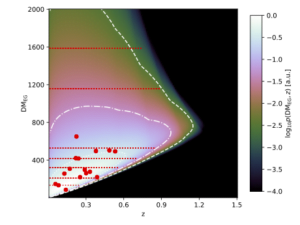Project area/S
- Fast Transients and Pulsars
Project Details
Fast radio bursts are millisecond scale signals with an as-yet unknown origin arriving from galaxies from the distant Universe. Their properties allow us to study the distribution of matter through which they pass, and in particular, solve a key problem in astronomy/cosmology: the Hubble Tension.
The Hubble constant, which governs the expansion rate of the Universe, is found to be about 67 km/s/Mpc from measurements of the cosmic microwave background and the big bang nucleosynthesis.. However – when we measure this in the nearby Universe, using e.g. supernovae, we find values of about 73 km/s/Mpc. The results are mutually inconsistent, and could indicate either that our local measurements are wrong, or that the Universe has undergone an unexpected expansion, e.g. through a phase transition of space-time itself.
This project will work on a code which is being used to model Fast Radio Burst observations and help unravel the structure of the Universe.
Student Attributes
Academic Background
Some astronomy would be helpful
Computing Skills
Python, and experience in minimization would be preferable
Training Requirement
Latex & High Performance Computing
Project Timeline
- Week 1 Inductions and project introduction
- Week 2 Initial Presentation
- Week 3 Code review
- Week 4 Review of FRB surveys
- Week 5 Implementation of FRB surveys – beam, time, observations
- Week 6 Implementation of FRB surveys – testing
- Week 7 Parameter optimization and modelling
- Week 8 Interpretation of optimal parameters
- Week 9 Final Presentation
- Week 10 Final Report

Caption: model of the expected redshift-dispersion measure distribution of FRBs from ASKAP (shading) compared to measured FRBs with (dots) and without (lines) redshift.
